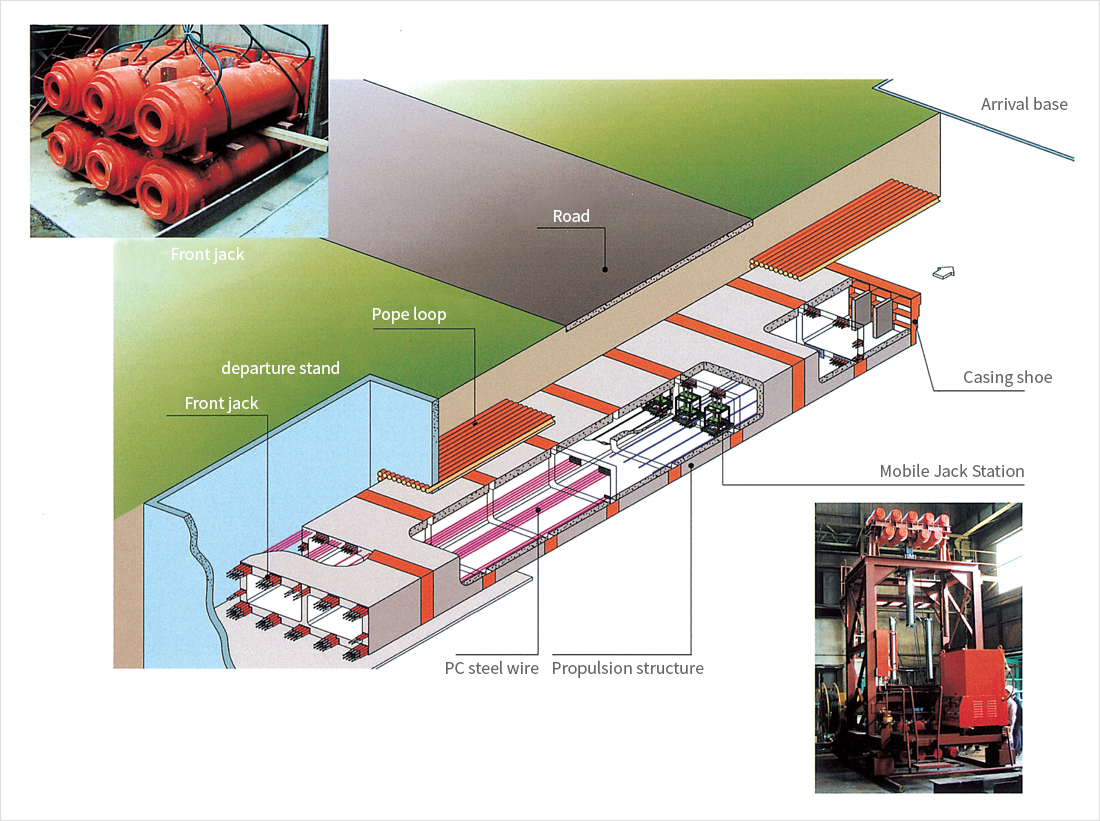About Business
Tuksu Engineering and Construction, a company dedicated to its customers
About Business
Trenchless tunnel
HOME > About Business > Trenchless tunnel

ESA construction method
Long distance construction method of structure
Outline of construction method
The ESA method is a trenchless method that allows the structure to be propelled in one direction over a long distance with Endless Self Advancing Method. The construction sequence is to move the structure forward by repeating the operation of fixing the back part (reaction force) to propel the tip like the motion of Jabeopre, then fixing the tip part and propelling the back part.
Three or more structures are connected with the PC strand, and a medium pressure jack is installed between each structure to construct the ESA facility.
When propelling the structure at the tip, the other structures at the rear become reaction forces and the final structure is advanced with the PC strand.
Features of construction method
1) Precast structures are manufactured from the outside, so it is easy to control quality
2) End press-fit flooring JACK is used, enabling propulsion without top side displacement
3) Pipe loop ball steel pipe is used to manage ground reinforcement Grouting Parallel construction measurement.
4) Excellent safety, construction is possible regardless of structure size, soil quality.
Construction method
The departure and arrival base is installed on both sides of the crossing point where construction is performed, and the structure to be pulled to the departure stand is divided and produced.
If necessary, a pipe loop is installed around the outside of the structure to protect the adjacent structure and the tip working face, and auxiliary methods are often used such as ground improvement as ground stabilization and groundwater countermeasures, pilot tunnel installation for securing the degree of construction and re-confirming the soil in advance
Composition and construction of ESA method

ESA method conceptual diagram

| Ordering organization | |
|---|---|
| Construction period |


